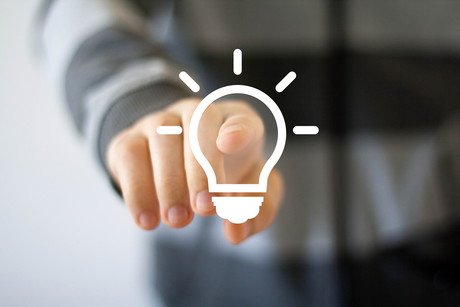Get the lowdown on Labor's new energy policy

Federal Opposition Leader Bill Shorten yesterday delivered a new energy policy for the Labor party, in a series of announcements based around boosting renewables and household batteries — as well as resurrecting the National Energy Guarantee (NEG).
The Plan for More Renewable Energy and Cheaper Power will see Labor pursue a bipartisan market mechanism, such as an NEG, in order to drive large-scale transition to clean energy and reduce electricity prices. Unlike the original NEG, which sought to cut emissions in the electricity sector by 26% on 2005 levels by 2030, Labor aims for Australia to be 50% powered by renewables by 2030, with emissions reduced by 45%.
Labor will double the original investment in the Clean Energy Finance Corporation (CEFC), providing an additional $10 billion in capital over five years from 2019–20. This will help boost investment in energy efficiency projects, particularly large-scale generation and storage projects.
The funding will also help support a Household Battery Program, which will provide a $2000 rebate for 100,000 households on incomes of less than $180,000 per year to purchase and install battery systems, as well as low-cost loans for households. The program seeks to help manufacturers scale up production and reduce their costs, in order to reach the goal of 1 million households with battery systems by 2025.
Meanwhile, renters and social housing residents will benefit from a Neighbourhood Renewables Program. Labor will establish community power hubs to support the development of renewables projects in local communities — such as solar gardens on apartment rooftops, community wind farms, energy efficiency upgrades for social housing and grants for community groups to pilot new projects.
The party will provide $5 billion in capital to futureproof the energy network, building and upgrading Australia’s energy transmission and distribution systems, using the Australian Energy Market Operator’s Integrated Systems Plan as a blueprint. The funding will also help manage the transition to more renewables in the energy system, ensuring households and businesses have the energy supply they need when they need it.
Finally, Labor will implement a suite of measures to help Australian businesses improve their energy efficiency and cut their power bills, including grants for manufacturers, allowing the Australian Renewable Energy Agency (ARENA) to support a broader range of energy efficiency projects, developing new training programs for energy managers and consultants, and improving state and territory energy efficiency initiatives through the Council of Australian Governments (COAG). The party will also implement a long-term plan to ensure workers are supported and trained as Australia’s energy mix changes.
The Energy Efficiency Council (EEC) has welcomed the policy, with CEO Luke Menzel claiming the plan will slash energy bills for families and businesses, boost productivity for manufacturers and create thousands of jobs. He did, however, emphasise that the federal government must work with states and territories to achieve effective progress across the country.
“That’s why developing a proper plan through the COAG Energy Council is so important,” he said.
The Australian Council of Social Service (ACOSS) has meanwhile welcomed Labor’s commitment to a clean energy transition, but says there is not enough to support for low-income earners who are struggling with high energy bills.
“People on low incomes, who cannot afford energy efficiency upgrades or to invest in solar and batteries, are unlikely to benefit from measures such as the $200 million battery subsidy, as currently proposed,” noted ACOSS CEO Cassandra Goldie. “Yet it is people on the lowest incomes who face the greatest financial stress from rising power bills.
“The battery rebates should be redesigned to target low-income households, including by direct investment in upgrades to social and community housing.
“The slated $100 million for community hubs also has potential to relieve pressures on low-income households, but is not enough to meet the needs of hundreds and thousands of low-income households, and should be significantly increased. Social sector community organisations should be a key partner in the establishment of the community hubs.
“Likewise, additional investment in the CEFC and ARENA should include programs targeted at low-income households and communities and accelerate existing social housing and Aboriginal and Torres Strait Islander community programs.”
Please follow us and share on Twitter and Facebook. You can also subscribe for FREE to our weekly newsletter and bimonthly magazine.
$14 million boost for sustainable concrete research
SmartCrete CRC is co-funding six research projects that aim to advance Australia's concrete...
Insurance sector digs into impact of mandatory climate reporting
Businesses are being encouraged to prepare for the impact of mandatory climate disclosure in...
Six bright startups to feature at renewables showcase
Following a record number of applications, Innovation Bay and ARENA have selected six startups to...









